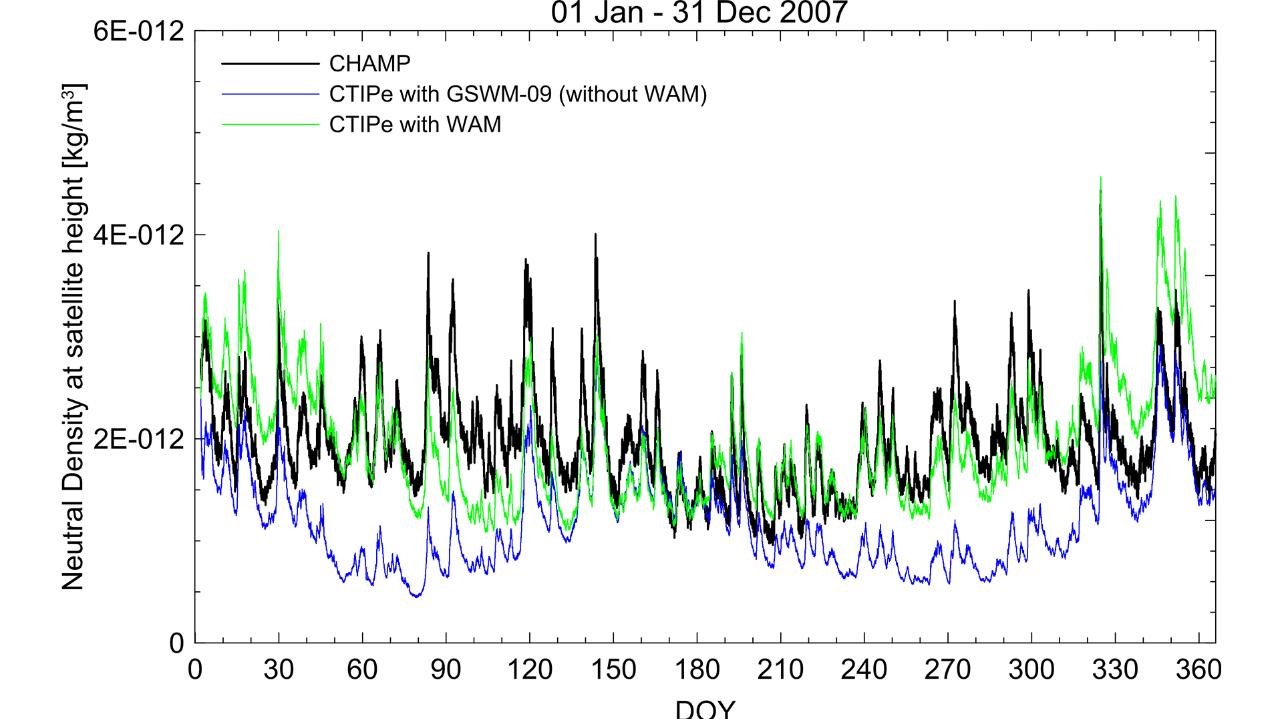Tim Fuller-Rowell
CIRES Senior Research Scientist for NOAA Space Weather Prediction Center
- Ph.D., University College, London, 1981
Research Interests
My group studies space weather, specifically, the dynamics, energetics, chemistry, and electrodynamics of the thermosphere and ionosphere.
Current Research
How waves from the lower atmosphere drive space weather
CIRES' broad sphere of science also includes "space weather." The term "space weather" refers to the variable conditions on the Sun, throughout space, and in Earth's magnetic field and upper atmosphere that can influence the performance of space-borne and ground-based technological systems. Near Earth, space weather impacts satellite drag and orbit prediction, as well as communication and navigation systems, which in extreme cases can endanger human life.
The Atmosphere-Ionosphere Modeling (AIM) Group in CIRES targets the near-Earth response to solar variability, and also investigates the connections between terrestrial weather and space weather. When the Sun is active, the impact of solar variability, such as flares or coronal mass ejections, dominates space weather. Recently we have become increasingly aware of the impact of lower-atmospheric processes on space weather: A whole spectrum of waves is continually bombarding the upper atmosphere, and they originate from tropospheric convection, absorption of radiation by ozone and water vapor, sudden stratospheric warmings, jet stream adjustment, and ocean waves. To quantify the impact of this lower-atmosphere spectrum of waves, we have been working with our NOAA partners to build a whole atmosphere model (WAM). WAM can now simulate a large part of this neutral atmosphere wave spectrum.
One of the impacts of these waves is on satellite drag. Most of the drag on a satellite in low-Earth orbit, such as the International Space Station (ISS), 250 miles above Earth, comes from the tenuous atmospheric gas it flies through, which is more than 1 billion times less dense than at sea level, yet is enough to perturb the ISS orbit. The figure shows neutral density measured at these altitudes from the German Challenging Minisatellite Payload (CHAMP) satellite. The episodic spikes of density come from increases in energy deposition from geomagnetic storms when the Sun suddenly becomes more active; these are superimposed on a longer-term seasonal modulation. Attempts to model the changes through the year using an upper atmosphere model by itself are good at capturing the spikes in density, but are not good at capturing the seasonal changes. The model underestimates the density at both equinoxes. When we used the WAM spectrum of waves from the lower atmosphere to force the upper atmosphere in addition to solar and geomagnetic forcing, we were able to capture a large part of the semi-annual variation and improve orbit prediction.
Research Categories
SpaceResearch Images
to
Invalid date -Sponsors
-
Invalid dateP.I.(s)
About CECA
CECA connects and creates a supportive environment for graduate students and postdocs who come from various academic units to do research in CIRES.
